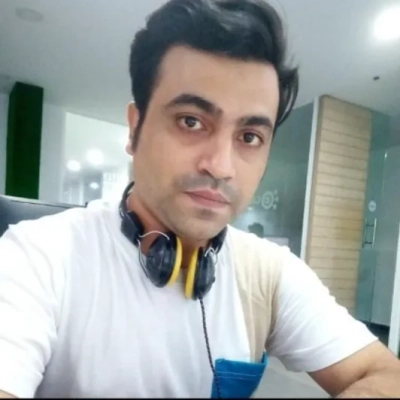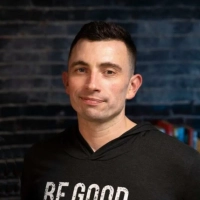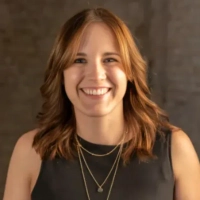20 Approaches to Talent Development and Succession Planning
Navigating the complexities of talent development and succession planning requires more than just a standard approach. This article delves into innovative strategies that are reshaping the landscape, with insights from leading experts who are at the forefront of the industry. Discover how to cultivate a robust talent pipeline and ensure a seamless transition of leadership through proven, expert-endorsed methods.
- Launch Rotational Development Program
- Implement Leadership Development Initiative
- Develop Immersive Shadowing Experience
- Pair Employees with Mentors
- Focus on Cross-Training
- Create Mentorship Program for New Agents
- Pair Mid-Level Employees with Senior Leaders
- Hire Right People and Invest in Growth
- Identify Key Roles and Develop Talent
- Create Individual Growth Plans
- Nurture Potential and Build Strong Foundation
- Foster Continuous Growth and Empowerment
- Pair Senior Executives with High-Potential Employees
- Implement Structured Career Pathways
- Identify Strengths and Tailor Training Programs
- Create Custom Growth Tracks
- Identify High-Potential Employees
- Offer Tailored Growth Opportunities
- Implement Succession Planning Model
- Create Cross-Functional Collaboration Program
Launch Rotational Development Program
I've found that combining clear growth paths with hands-on mentorship is the most effective way to foster talent and ensure a strong leadership pipeline. At one point, we launched a rotational development program where high-potential employees spent six months in different departments (underwriting, marketing, and claims) so they could build a 360-degree view of our operations. This cross-functional exposure helped them spot inefficiencies, while also giving them broader skills and perspective. One participant uncovered a gap in our claims workflow that, once fixed, trimmed average processing times by 20%. By allowing emerging leaders to learn multiple facets of the business, we not only prepared them for senior roles but also saw immediate operational improvements along the way. It showed me that real-world, structured learning opportunities are far more motivating than traditional classroom-style training alone.

Implement Leadership Development Initiative
My approach to talent development focuses on identifying potential early and providing opportunities for growth through mentorship and training. One specific program I implemented was a leadership development initiative, where we selected high-potential employees and paired them with senior leaders for mentoring. We also provided targeted workshops to build key skills like decision-making and communication. As a result, several participants were promoted into leadership roles within a year, and it strengthened our overall leadership pipeline. This program helped us retain top talent and ensure we had the right people ready to step up when needed.

Develop Immersive Shadowing Experience
Developing talent at Zogiwel leans heavily on an immersive shadowing experience, something we call "Role Rotation." This program isn't just about filling gaps; it's about equipping individuals with an understanding of various roles within the company. Picture this: a team member from our design department spends a week working with customer support, gaining insights into consumer preferences and challenges. This cross-functional exposure cultivates adaptability and a more holistic view of the business. It holds the team together in a shared mission and helps identify future leaders who can think outside their usual roles. A practical tip to enhance this approach is setting specific, measurable challenges for each rotation phase. It keeps learning focused and results-oriented, empowering employees to bring fresh ideas back to their original roles and nurturing a deeper pool of talent ready for succession.

Pair Employees with Mentors
Talent development and succession planning are essential for organizational success. Talent development focuses on assessing and promoting employees' potential, while succession planning ensures a seamless transition for essential roles by preparing internal and external candidates. At BOTSHOT, a successful initiative included pairing employees with mentors as part of a structured leadership development program. This program identified high-potential employees, mapped their skills, and provided tailored training. For instance, one employee mentored over 12 months, transitioned to a critical leadership role, significantly reducing downtime during a managerial shift. Our approach includes identifying critical roles, assessing talent, providing mentorship, and maintaining a strong feedback process. By aligning development with organizational goals, we ensure readiness for future challenges while promoting employee growth and engagement.

Focus on Cross-Training
In developing talent and planning for succession at Mondressy, the focus is on cross-training to build a well-rounded team equipped to handle various roles. This approach ensures that team members gain insights into different aspects of the business, enhancing adaptability and collaboration. For instance, we rolled out a program where employees can rotate between departments like customer service, marketing, and inventory management for a few weeks. This not only broadens their skills but helps identify potential leaders who naturally excel in diverse settings. It also empowers the team to step up in crucial moments, reducing dependency on any single individual. Implementing a "skill swap" day each month, where team members teach each other a bit of what they do, is practical and encourages ongoing learning while pinpointing promising future leaders.
Create Mentorship Program for New Agents
In my experience, one specific example of a successful program I implemented was a mentorship program for new agents. The idea behind this program was to pair experienced agents with newly hired agents, providing them with guidance, support, and practical knowledge about the industry.
The program was structured in such a way that each new agent would be paired with an experienced agent for a period of six months. During this time, they would work closely together, with the experienced agent providing guidance on various aspects of the job such as client management, negotiation strategies, and market analysis.
The results of this program were extremely positive. Not only did it help to develop the skills and knowledge of new agents, but it also fostered a sense of camaraderie and cooperation within the team. The experienced agents took pride in passing down their knowledge and expertise to the next generation, while the new agents felt supported and motivated by their mentors.

Pair Mid-Level Employees with Senior Leaders
My approach to talent development focuses on identifying high-potential individuals early and giving them clear pathways to grow into leadership roles.
One program that stands out was our internal mentorship and shadowing initiative. We paired mid-level employees with senior leaders, allowing them to gain hands-on experience with strategic decision-making and day-to-day leadership tasks. For example, during a major project transition, a mid-level manager shadowed our operations lead, contributing to planning meetings and resolving bottlenecks. Over six months, this individual not only built confidence but also developed the skills needed to step into a leadership role when the operations lead retired.
The program's success came from clear goals and structured feedback loops. Both mentors and mentees were encouraged to share progress and challenges, which helped refine the program continuously. It also fostered a culture of collaboration and knowledge-sharing.
Effective talent development isn’t just about filling roles, it’s about preparing your team for long-term success. If you’d like more details about structuring similar initiatives, feel free to reach out, I’d be happy to share insights!

Hire Right People and Invest in Growth
Talent development and succession planning are crucial aspects of my business. In order to stay competitive in the industry, it is imperative to have a strong team of agents who are equipped with the necessary skills and knowledge.
My approach to talent development starts with hiring the right people. I look for individuals who not only have a passion for real estate but also possess qualities such as drive, determination, and excellent communication skills. Once I have assembled my team, I invest time and resources into their professional growth.
One specific program that I implemented was a mentorship program for new agents. The program paired experienced agents with newer ones to provide guidance, support, and practical training. This not only helped the new agents learn the ropes of the business but also allowed them to build a relationship with a more experienced team member.
The success of this program was evident in the increased confidence and productivity of the new agents, as well as the positive impact on team morale. It also contributed to a smooth transition for succession planning, as these mentored agents were able to step into leadership roles when needed.

Identify Key Roles and Develop Talent
When it comes to talent development and succession planning, my approach is about always thinking ahead. I identify key roles within the company and then focus on finding internal talent who could potentially step into those roles if needed. Ideally, you want to have a few candidates in mind for each position to avoid scrambling when the time comes.
Once those individuals are identified, I conduct a skills gap analysis to evaluate where they stand in terms of the required skills for the role. From there, I work with them on a tailored development plan, which could include formal education like an Executive MBA, attending relevant workshops, or working on soft skills through mentorship programs.
A good example of this approach was when I identified a strong team member in the finance department who had the potential to step into a higher leadership role. We built a development plan around mentorship and leadership training, and within a year, they were ready to step into the role seamlessly, minimizing disruption to the team and company.

Create Individual Growth Plans
At our company, we believe that every employee has unique potential, so we focus on creating tailored Individual Growth Plans for everyone. These plans include personalized learning goals, quarterly check-ins, and access to helpful resources like courses or conferences. For succession planning, we work on identifying high-potential employees early and prepare them for leadership through our program called "Next in Line." This approach helps us build a strong talent pipeline for the future.
One success story from our "Next in Line" program is our current head of marketing. They started as a content strategist and, through mentorship and strategic project ownership, gained the skills and experience needed for the leadership role. When the opportunity came, they were ready to step up and make a smooth transition into the new position. This example shows how personalized development and focused preparation can create opportunities for growth and long-term success.
Nurture Potential and Build Strong Foundation
When it comes to talent development and succession planning, our approach is centered around nurturing potential and building a strong foundation for future leaders. We believe in investing in people, creating opportunities for growth, and ensuring that every team member feels valued and empowered. It's not just about filling roles-it's about creating a pipeline of skilled, motivated individuals who are ready to step up when the time comes.
One program we're especially proud of involved identifying high-potential employees and providing them with targeted training and development plans, mentorship from senior leaders, and exposure to different areas of the company. For instance, one employee who started in a support role was able to move up to a management position through this program. Seeing the growth and impact this employee has made in their new role is a testament to the success of our talent development and succession planning efforts.
I really believe that in every individual, there is untapped potential waiting to be nurtured and developed.

Foster Continuous Growth and Empowerment
My approach to talent development and succession planning is rooted in fostering a culture of continuous growth and empowerment. I believe in identifying and nurturing the unique strengths of each individual within the team, providing them with opportunities to expand their skills and take on leadership roles. One specific example of this is the mentorship program I implemented at Kate Backdrops. Through this program, senior team members mentor new recruits, sharing expertise and fostering collaboration. This helps new team members excel quickly while allowing experienced professionals to sharpen their leadership skills. I also emphasize cross-training across departments to give employees a well-rounded understanding of our operations and prepare them for future challenges.
Pair Senior Executives with High-Potential Employees
I recently implemented a mentorship program where I paired senior executives with high-potential employees for biweekly coaching sessions, focusing on both technical skills and leadership development. When I saw Sarah, one of our mentees, successfully lead her first major client presentation after six months of mentoring, I knew our approach of combining structured feedback with hands-on experience was making a real difference.
Implement Structured Career Pathways
As a recruiting firm leader, I understand the risks of not investing in talent development and career advancement for your team. Neglecting this aspect often leads to losing top performers to other companies when they're ready to grow.
To address this, we've implemented structured career pathways for our team members. The process begins with a one-on-one conversation to understand their long-term career aspirations and how their current role at Advastar supports those goals. From there, we develop a personalized development plan tailored to their needs. This might include upskilling opportunities, mentorship from senior recruiters, or participation in industry events, workshops, and courses for both learning and networking.
For example, one of our junior recruiters expressed a desire to move into a senior account management role. We paired them with a mentor, provided targeted training in client relationship management, and gave them a leadership role in a key project. Within a year, they successfully transitioned into the new role, demonstrating the impact of our approach.
Ultimately, for succession planning to be successful, retaining high-potential employees is crucial. While guarantees can't always be made, open communication about career goals and clear opportunities for growth significantly increase the likelihood of retaining ambitious team members.

Identify Strengths and Tailor Training Programs
I strongly believe in investing in talent development and succession planning. This is because the success of our industry heavily relies on the skills and expertise of our team members. In order to keep up with the constantly evolving real estate market, it is crucial for us to continuously develop and nurture our talents.
My approach to talent development starts with identifying individual strengths and areas for improvement within my team. This can be done through regular performance evaluations or simply by having open discussions with each team member. By understanding their strengths and weaknesses, I am able to tailor training programs that will address their specific needs.
One specific example of a successful program that I have implemented is a mentorship program for new agents within my team. This program pairs up experienced agents with the newer ones, providing them with guidance and support as they navigate their way through the real estate industry. The mentors not only share their knowledge and expertise, but also help the mentees develop important skills such as networking and client management.
Create Custom Growth Tracks
I found that creating custom growth tracks for each team member at Goaldy, where they could choose projects aligned with their interests while meeting our agency's needs, really boosted both engagement and skill development. We started doing monthly 'skill swap' sessions where team members teach each other their expertise, which has not only improved our overall capabilities but has also strengthened our team bonds.

Identify High-Potential Employees
I understand the importance of talent development and succession planning in building a successful business. It is crucial to have a strong team with the necessary skills and knowledge to handle various tasks efficiently. Additionally, having a plan in place for when key team members decide to leave or retire is essential to ensure the smooth functioning of the company.
My approach to talent development and succession planning involves identifying high-potential employees within my team and providing them with opportunities for growth and advancement. This includes training programs, mentoring, job rotations, and project-based learning experiences.
One specific example of a successful program that I implemented was a mentorship program for new agents. As a senior agent, I noticed that many of the newer members of my team were struggling with certain aspects of their job, such as handling negotiations or managing client relationships.
To address this issue, I paired each new agent with a more experienced agent as their mentor. The mentor would guide and support the mentee through various tasks and challenges they faced on the job. This not only helped improve their skills but also fostered a sense of camaraderie within the team.

Offer Tailored Growth Opportunities
My approach to talent development and succession planning is centered on identifying potential, offering tailored growth opportunities, and fostering a culture of mentorship. I believe in creating individualized development plans that align both employee aspirations and organizational needs. For example, I once led a program where high-performing team members were paired with senior leaders for mentorship, coupled with clear milestones and ongoing feedback.
This initiative not only upskilled employees but also ensured a pipeline of ready successors for key roles. One success from this program was promoting a junior manager into a strategic leadership position after just one year. The result was not only enhanced morale but also improved operational efficiency. By investing in people and aligning their growth with business objectives, I ensure long-term stability while empowering professionals to thrive.

Implement Succession Planning Model
The effective approach that I follow for talent development and succession planning includes certain key elements. Those elements include identification of critical roles, assessing highly talented employees, providing relevant training and monitoring progress regularly. This approach promotes employee engagement and ensures the leadership transition within the organization.
The perfect example of a successful program that we implemented is the 'succession planning model,' which focuses on the internal development of talented juniors at entry-level positions through appropriate grooming techniques. The leadership programs were integral to our company culture and helped them learn and enhance their skills to take on key roles in the organization. This proactive approach helped create a stable leadership pipeline through the promotion of junior-level talents to the upper management level.
This program also initiated regular evaluations to find successors for key roles and positions.

Create Cross-Functional Collaboration Program
My approach focuses on creating clear growth paths and providing opportunities for team members to explore their potential.
One initiative I implemented was a "cross-functional collaboration program," which paired team members from marketing with those in research and product development. The goal was to expose them to different areas of the business, allowing them to gain new skills and a broader understanding of how their roles contribute to our mission.
During the program, a junior marketer who showed an interest in educational content creation was paired with our product research team to co-develop materials for a microdosing guide. Not only did this strengthen her skills in technical writing, but it also positioned her to step into a more senior role when our content lead transitioned out of the company.
The program created a culture of learning and adaptability while ensuring we had a strong pipeline of talent ready to step into key positions.







